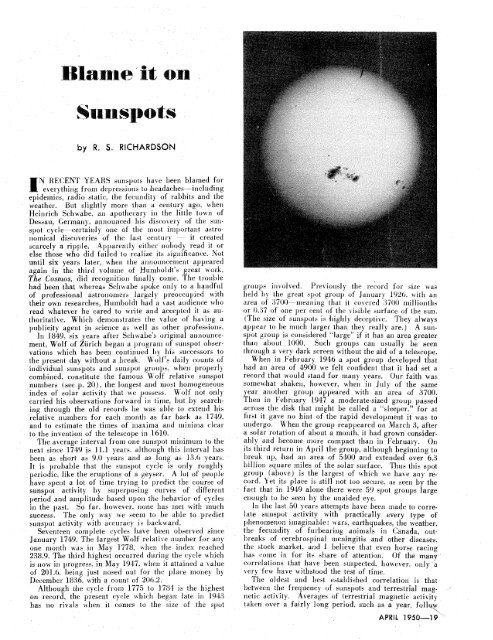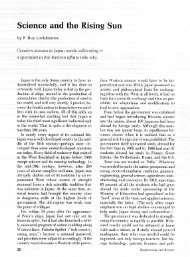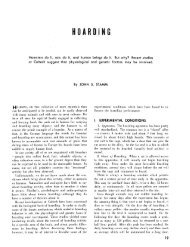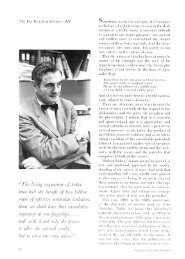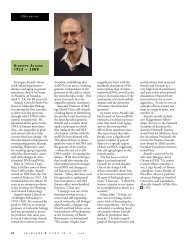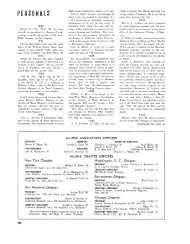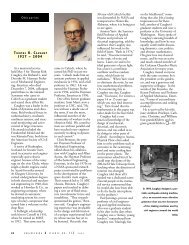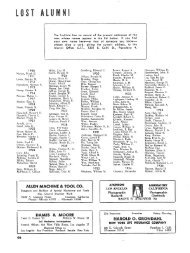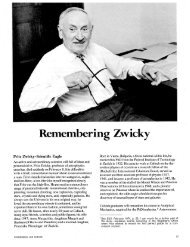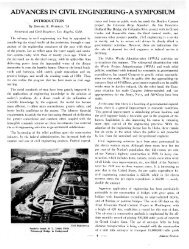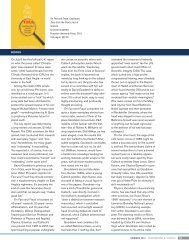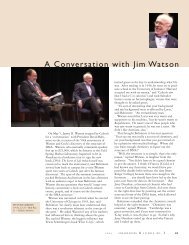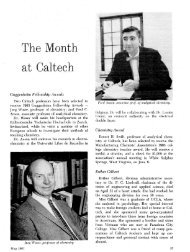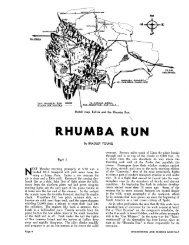T - Engineering & Science - California Institute of Technology
T - Engineering & Science - California Institute of Technology
T - Engineering & Science - California Institute of Technology
Create successful ePaper yourself
Turn your PDF publications into a flip-book with our unique Google optimized e-Paper software.
y R. S. RICHARDSON<br />
N RECENT YEARS sunspots have been blamed for<br />
every thing from depressions to headaches-including<br />
epidemics, radio static. tlie fecundit) <strong>of</strong> rabbits and the<br />
weather, But slightly more than a century ago. when<br />
Heinrich Sehwabe. an apotlierary in the little tovn <strong>of</strong><br />
Desaau, Geimany. announced his di~-w\ erj <strong>of</strong> the sunspot<br />
cycle -certainly one <strong>of</strong> the inosi important artsonomical<br />
discoveries <strong>of</strong> the laat century - it created<br />
scarcely a ripple. Appdren~ly either nobody read it or<br />
else those who did failed to ~ealize it:- sigiiific~rire. Not<br />
until six years later. when the announcement appeared<br />
again in the third volume <strong>of</strong> Hnnibo1dt"s great work.<br />
The Csmos, did recognition finally come. The tiouble<br />
had been that whereas Schwabe spoke only to a handful<br />
<strong>of</strong> pr<strong>of</strong>essional astronomer* largely preoccupied with<br />
their own researches. Humholdi had a vast audience who<br />
read whatever he cared to write and accepted it as au-<br />
thoritative. Which dernonstiateb the value <strong>of</strong> having d<br />
publicity agent in science a:- well a? other pr<strong>of</strong>essions.<br />
In 1849. six years after Schw abe'b original announce-<br />
ment. Wolf <strong>of</strong> Zurich began a program <strong>of</strong> siiiispot obser-<br />
vations which has been continued by Ins successors to<br />
the present day without a break. Wolf's daily counts <strong>of</strong><br />
individual sunspots and sunspot groups. when properl'y<br />
combined. constitute the famous VI olf relative suii~pot<br />
numbers (see p. 20), the longest and most homogeneous<br />
index <strong>of</strong> solar activity that we posses:;. \ olf not onlj<br />
carried his observations forward in time. but by search-<br />
ing through the old records he was able to extend his<br />
relative numbers for each month as far back as 1749.<br />
and to estimate the times <strong>of</strong> maxima and minima clear<br />
to the imention <strong>of</strong> the telescope in 1610.<br />
The average intersal from one sunspot minimum to the<br />
next since 1749 is 11.1 jears. although thir iri~ertal has<br />
been as short a:- 9.0 yedr:- and as long as 13.6 )ear?.<br />
It is probable that the ,-uiispot cycle is only roughly<br />
periodic, like the eruptions <strong>of</strong> a geyser. A lot <strong>of</strong> people<br />
have spent a lot <strong>of</strong> time trying to predict the course <strong>of</strong><br />
sunspot activitj by superposing curves- <strong>of</strong> difierent<br />
period and amplitude baaed upon the behavior <strong>of</strong> cycles<br />
in the past. So far. liot+e\er. none ha:; met with much<br />
success. The only Via) we seen1 to be able to predict<br />
sunspot activity with accuracj is backward.<br />
Seventeen complete cycles ha1 e been obsei ved since<br />
January 1749. The largest Wolf relative number for any<br />
one month was in May 1778. i


